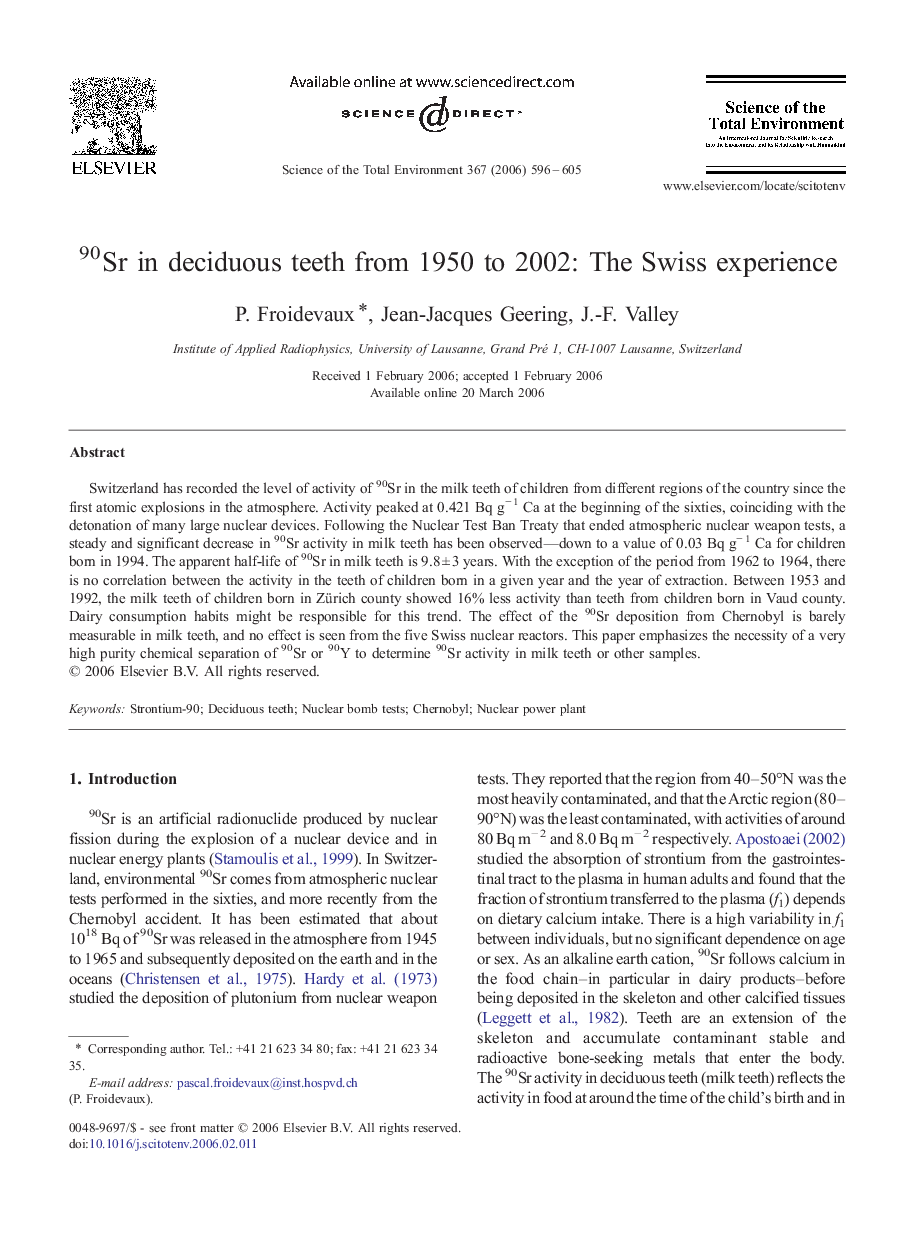| Article ID | Journal | Published Year | Pages | File Type |
|---|---|---|---|---|
| 4433813 | Science of The Total Environment | 2006 | 10 Pages |
Abstract
Switzerland has recorded the level of activity of 90Sr in the milk teeth of children from different regions of the country since the first atomic explosions in the atmosphere. Activity peaked at 0.421 Bq gâ 1 Ca at the beginning of the sixties, coinciding with the detonation of many large nuclear devices. Following the Nuclear Test Ban Treaty that ended atmospheric nuclear weapon tests, a steady and significant decrease in 90Sr activity in milk teeth has been observed-down to a value of 0.03 Bq gâ 1 Ca for children born in 1994. The apparent half-life of 90Sr in milk teeth is 9.8 ± 3 years. With the exception of the period from 1962 to 1964, there is no correlation between the activity in the teeth of children born in a given year and the year of extraction. Between 1953 and 1992, the milk teeth of children born in Zürich county showed 16% less activity than teeth from children born in Vaud county. Dairy consumption habits might be responsible for this trend. The effect of the 90Sr deposition from Chernobyl is barely measurable in milk teeth, and no effect is seen from the five Swiss nuclear reactors. This paper emphasizes the necessity of a very high purity chemical separation of 90Sr or 90Y to determine 90Sr activity in milk teeth or other samples.
Related Topics
Life Sciences
Environmental Science
Environmental Chemistry
Authors
P. Froidevaux, Jean-Jacques Geering, J.-F. Valley,
